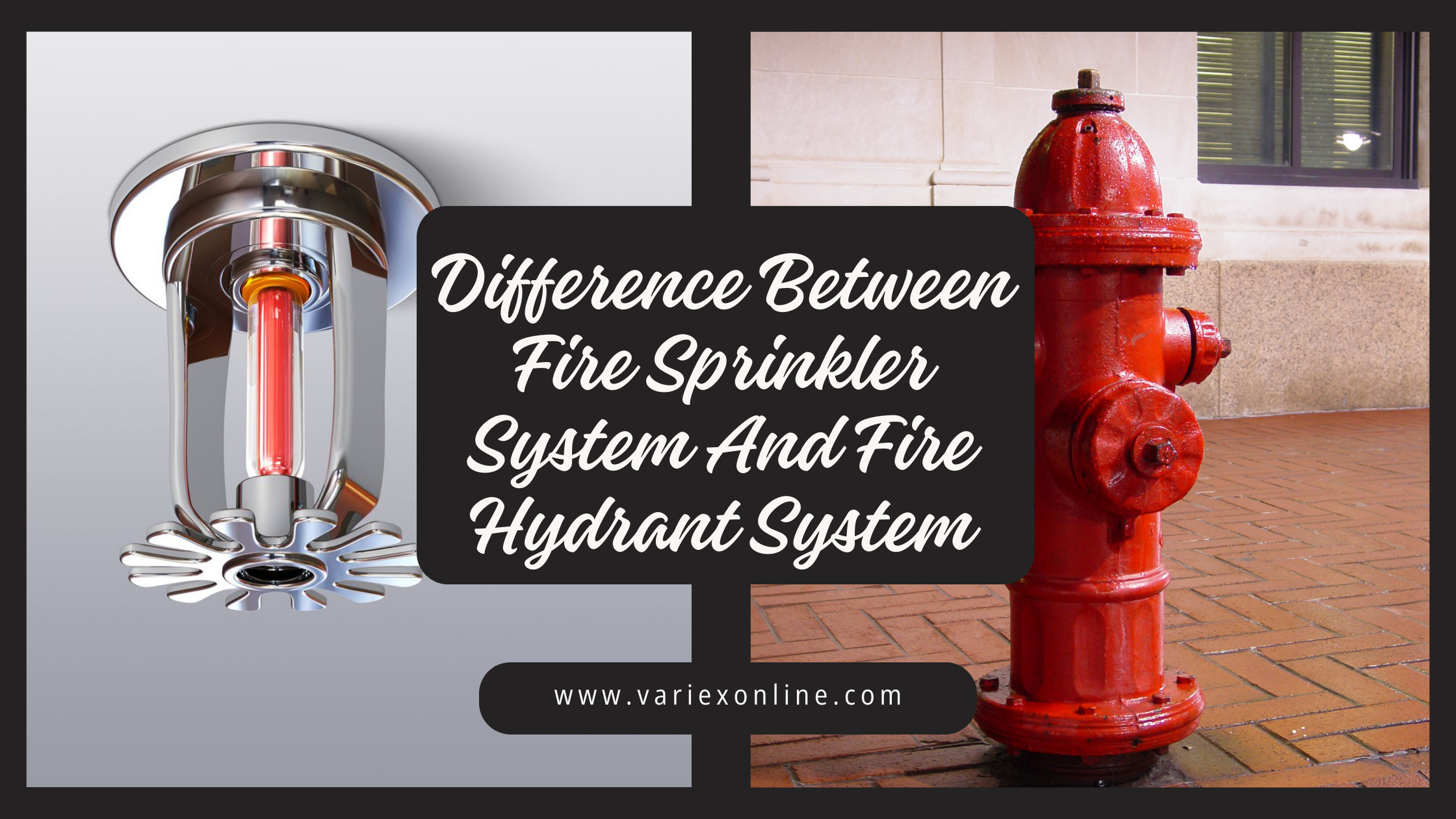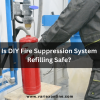![]()
Fire Immuniser
+91-7829629111
Email: info@variex.in
Varistor Technologies Pvt. Ltd.
Block-1, First Floor, Ardente Office One, Hoodi Circle, ITPL Main Road, Bengaluru, Karnataka 560048, IN
Difference Between Fire Sprinkler System And Fire Hydrant System
Fire sprinkler systems and fire hydrant systems are crucial components of fire protection and safety measures in buildings and communities. While both are designed to mitigate fire hazards, they serve different purposes and have distinct functionalities. Understanding the differences between these systems is essential for ensuring effective fire safety planning and implementation.
Fire Sprinkler System
Purpose: Fire sprinkler systems are primarily installed within buildings to suppress fires at their early stages or to prevent them from spreading. These systems are designed to detect heat from a fire and automatically release water to extinguish or control the fire until emergency responders arrive.
Components:
- Sprinkler Heads: These are strategically placed throughout the building and are activated individually by heat, typically around 155-165°F (68-74°C).
- Piping Network: Carries water under pressure to the sprinkler heads. It is separate from the building's regular plumbing.
- Control Valve: Manages water flow to the sprinkler system, often triggered by a fire detection system.
- Alarm System: Alerts occupants and emergency responders when the sprinkler system is activated.
Operation:
- Each sprinkler head operates independently, responding to heat from a fire. Only the sprinkler heads affected by the fire release water, minimizing water damage.
Benefits:
- Effective in controlling fires in their early stages.
- Reduces property damage and potentially saves lives by preventing fires from spreading.
Aspect | Fire Sprinkler System | Fire Hydrant System |
|---|---|---|
Location | Installed inside buildings | Located outside buildings, along streets/public areas |
Purpose | Suppress fires within buildings | Provide access to water for firefighting |
Components | Sprinkler heads, piping, control valve, alarm | Hydrant, water supply, hose, nozzle |
Activation | Automatically triggered by heat detection | Manually activated by firefighters |
Functionality | Prevents fires from spreading inside buildings | Supplies water for firefighting externally |
Water Usage | Controlled release to local area affected by fire | High volume for extensive firefighting operations |
Operation | Individual heads activate as per fire conditions | Connected to hose for direct fire suppression |
| Benefits | Limits fire damage, protects occupants | Provides essential water supply for firefighting |
Fire Hydrant System
Purpose: Fire hydrant systems are external to buildings and are crucial for providing access to large volumes of water to firefighters during a fire emergency. They are strategically located in public areas and along streets to ensure quick access.
Components:
- Hydrant: A valve connected to an underground water supply or pressurized water mains. It has a nozzle to attach hoses for firefighting operations.
- Water Supply: Connected to a reliable water source (municipal water mains or dedicated water tanks).
- Hose and Nozzle: Used by firefighters to direct water onto the fire.
Operation:
- Firefighters connect hoses to the hydrant to access pressurized water quickly.
- Provides a continuous flow of water for extinguishing large fires that cannot be controlled by internal sprinkler systems alone.
Benefits:
- Supports firefighting efforts with a readily available water supply.
- Can be critical in situations where internal sprinkler systems are overwhelmed or inaccessible.
Key Differences
- Location:
- Sprinkler System: Installed inside buildings.
- Hydrant System: Located outside buildings, accessible from streets or public areas.
- Functionality:
- Sprinkler System: Designed to suppress or control fires within a building.
- Hydrant System: Provides external access to water for firefighters to combat large fires.
- Activation:
- Sprinkler System: Activated automatically by heat detection within the building.
- Hydrant System: Activated manually by firefighters during firefighting operations.
- Water Usage:
- Sprinkler System: Uses water in a controlled manner to suppress fires locally.
- Hydrant System: Provides high volumes of water for extensive firefighting operations.
In conclusion, fire sprinkler systems and fire hydrant systems complement each other in ensuring comprehensive fire safety. Sprinkler systems protect buildings and occupants by preventing fires from spreading, while hydrant systems provide firefighters with essential water resources to extinguish larger fires effectively. Understanding their distinct roles and functionalities is essential for effective fire prevention and emergency response planning.
Frequently Asked Questions
A fire sprinkler system is a fire protection system installed within buildings. It consists of sprinkler heads connected to a network of pipes that are filled with pressurized water or other fire suppressant.
Fire hydrant systems are manually activated by firefighters during firefighting operations. Firefighters connect hoses to the hydrant's nozzle, open the hydrant valve, and use the water flow to extinguish fires or cool down hotspots. Hydrants provide high volumes of water quickly to support firefighting efforts.
Yes, fire sprinkler systems are highly effective in controlling fires in their early stages, often preventing them from spreading and causing extensive damage. They can save lives by providing immediate suppression before firefighters arrive.
Yes, fire hydrant systems are critical for effective firefighting operations, especially for extinguishing large fires that may exceed the capacity of internal building systems like sprinklers. They provide essential water resources that can be crucial in saving lives and minimizing property damage.
Fire sprinkler systems should be inspected and maintained regularly to ensure they are functioning correctly. This includes periodic inspections of sprinkler heads, valves, and piping, as well as testing the system's functionality and water supply. Maintenance schedules often follow guidelines set by local fire codes and manufacturers.
Final Say
At VariEx.in and VariexOnline.com, we specialize in supplying and installing top-quality fire fighting systems and equipment. From fire extinguishers to advanced suppression systems, we offer comprehensive solutions tailored to your needs. Our experienced team ensures precise installation and maintenance for optimal safety.
Trust VariEx for reliable fire protection. Contact us online or call 7829629111 to learn more.










